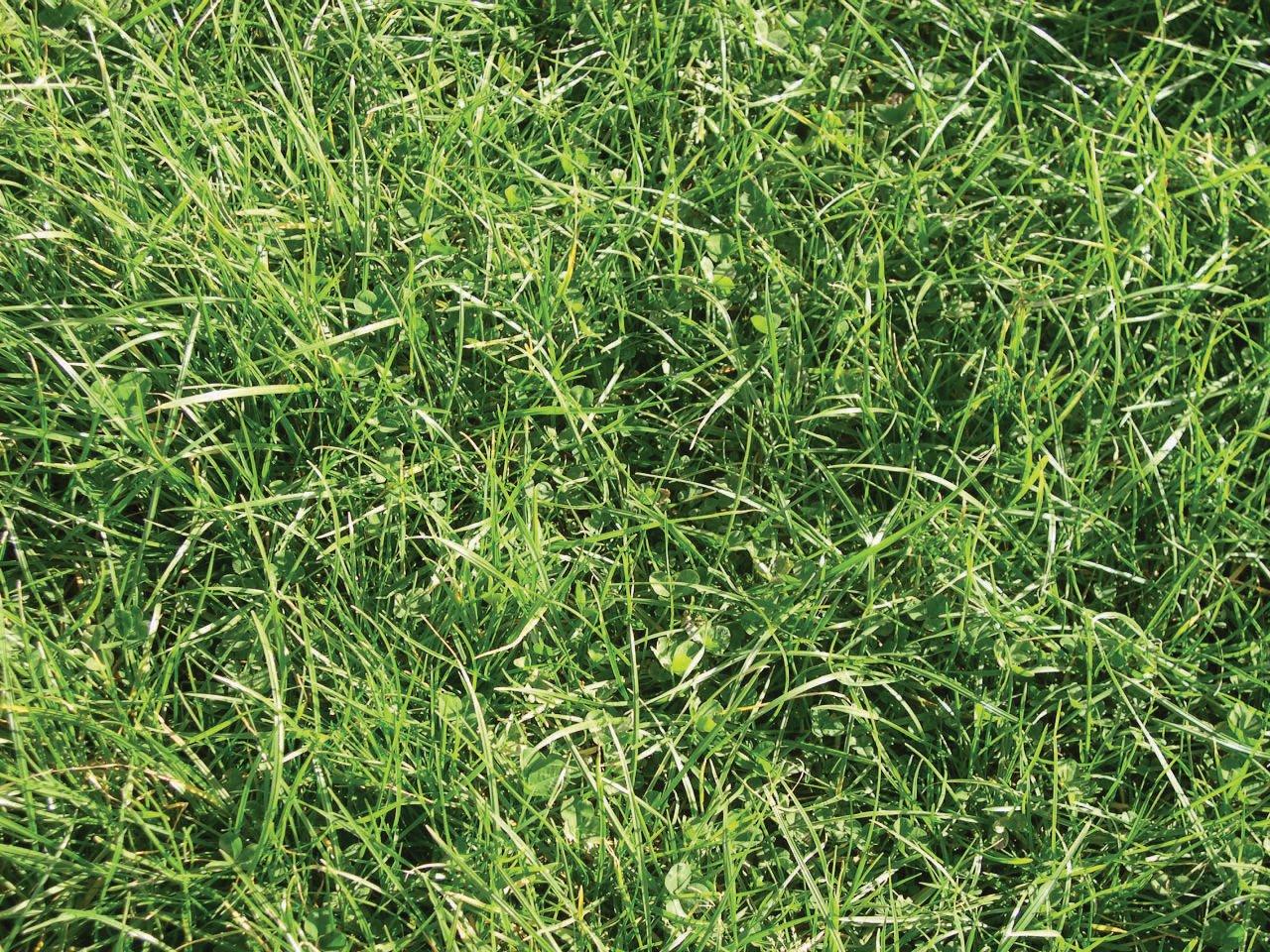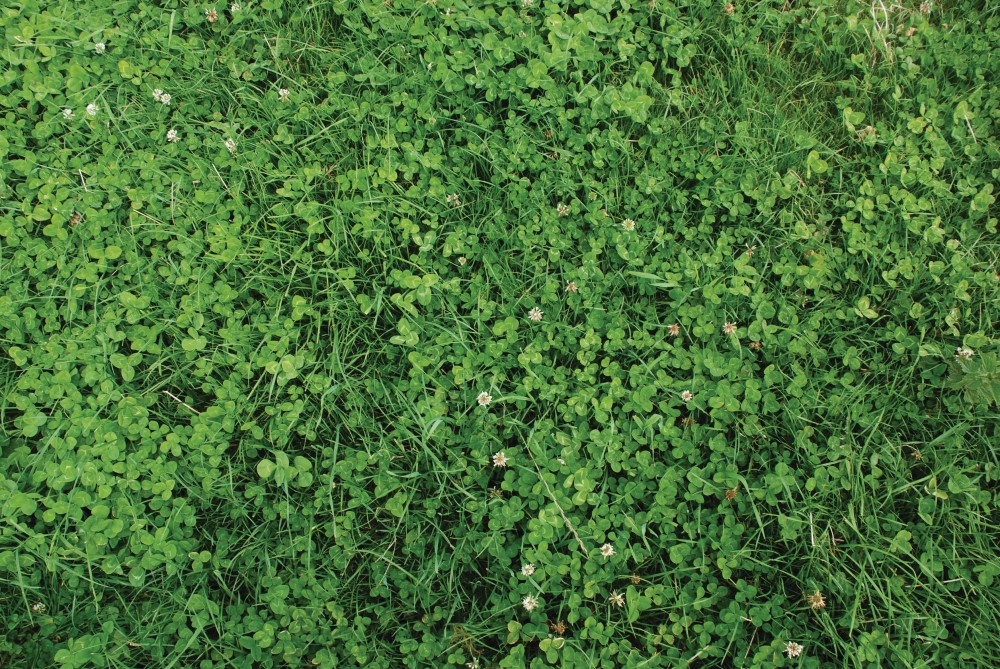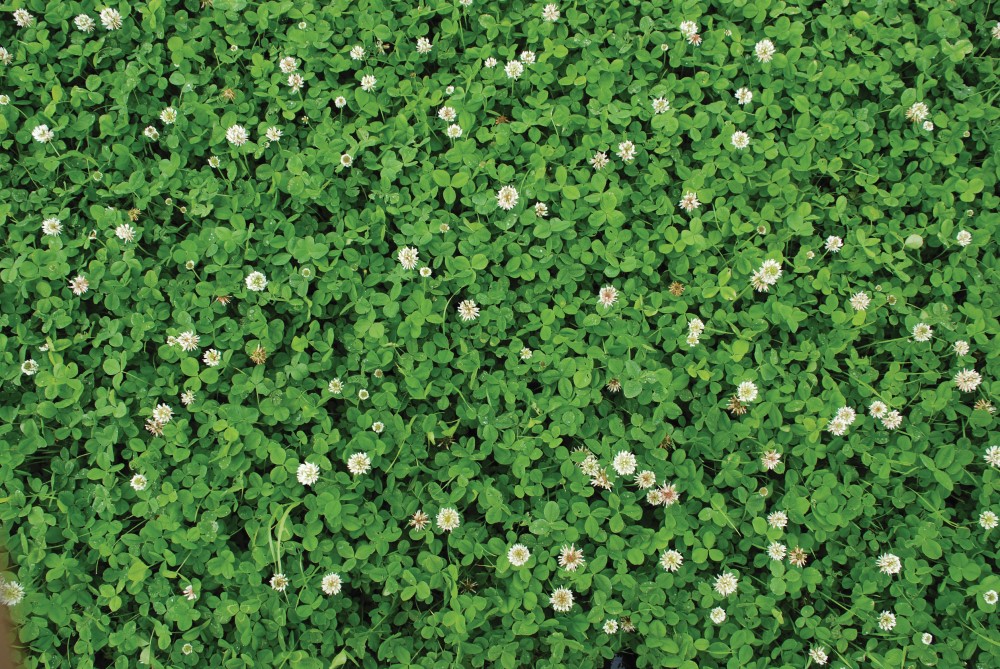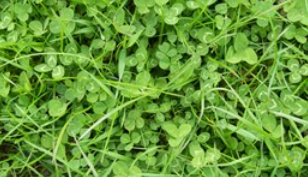Why manage clover levels in the sward?
The optimum amount of clover in a field is 30% of the dry matter (DM) of the total sward. At this level, clover can fix 180 kg N/ha/year and both animal and companion grass performance will benefit. However, the proportion of clover growing is often overestimated because its leaf lies face up compared with grass.
To reach 30% clover, the sward must appear to have 50–60% clover at its peak growth in August. Under rotational grazing, swards with 30% white clover content can be maintained for at least 10 years, with total sward DM yields reaching 10–11 t/ha/year.
Assessing the clover content of a sward
10% clover content.

30% clover content.

60% clover content.

Managing white clover
See our tips on white clover management, and how Robert Drummond uses clover in an organic system.
Find out more on managing white clover
Managing red clover
Read how to reduce crown damage and manage red clover for silage.
Lean more on managing red clover
Manure and slurry for clover
Find out how slurry application methods influence clover production.
Read more on manure and slurry for clover
Potential health problems associated with clover
Bloat and fertility are common issues related to grazing clover. See our advice on minimising the impact in grazing livestock.
See the potential animal health problems associated with clover
Clover pests and disease
From slugs to stem eelworm, read about the common pests and disease of clover.
Find out about clover pests and disease
Useful links
Learn more about grass and forage management
Clover species for grassland reseeding
Read more in the Recommended Grass and Clover Lists
Read the Establishing and growing clover guide
If you would like to order a hard copy of the Establishing and growing clover guide or the Recommended Grass and Clover Lists, please contact publications@ahdb.org.uk or call 0247 799 0069.
The information in these web pages was sourced from Germinal, Grassland Development Centre (IBERS, University of Aberystwyth) and Charlie Morgan (GrassMaster Ltd).



